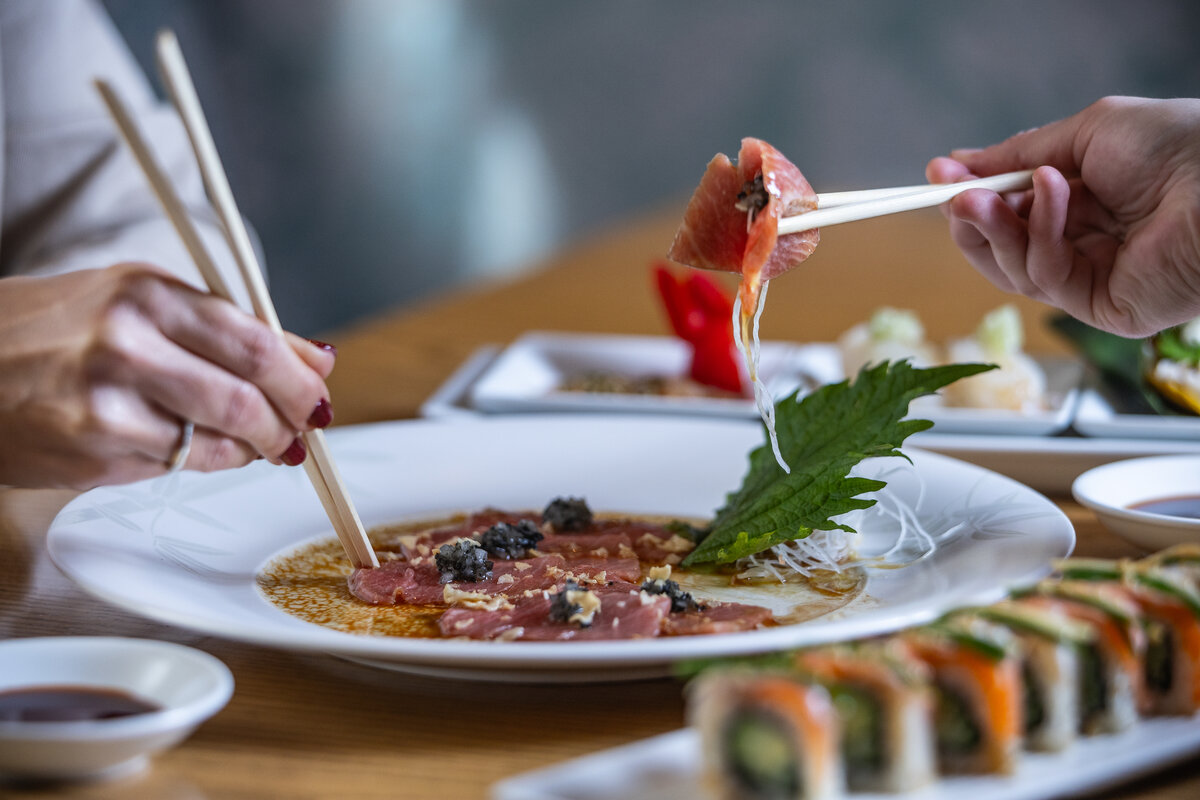NOBU Budapest: The special place for sashimi mastery and Japanese culinary art

Sashimi, one of the most refined dishes in Japanese cuisine, is no longer reserved only for die-hard fans of Far Eastern gastronomy. For years, NOBU Budapest has played a key role in promoting this sophisticated dining culture, where slicing raw fish is not merely a technique but an art form and philosophy. Here’s what makes authentic sashimi truly special, how a world-class chef works, and why NOBU Budapest has become the epicentre of premium Japanese gastronomic experiences in Hungary.
The story of NOBU
Over the past 30 years, Chef Nobu Matsuhisa has built an unparalleled high-end sushi empire. Today, NOBU has grown into a global brand, with locations stretching from Malibu to Manila, Beijing to Budapest. Founded by Matsuhisa, Robert De Niro, and Meir Teper, this iconic Japanese hospitality group now boasts an impressive collection of 60 restaurants, including 23 NOBU hotels worldwide. The brand celebrated its 30th anniversary last year, continuing to awe fans across the globe.

Sashimi in Hungary
Japanese cuisine lovers in Central Europe first got a taste of Nobu’s world-renowned specialties in Budapest when the local restaurant opened its doors in 2010.
Executive Chef Gábor Schreiner decided at age six to become a chef. In the early ‘90s, he spent two years working in Germany, experiencing high-quality culinary standards. Upon returning, he worked for seven years at Vadrózsa, then one of the country’s top restaurants. He later joined Fuji, where he discovered and fell in love with Japanese cuisine. Schreiner has been with NOBU Budapest from the start, where he’s tasked with blending traditional Japanese flavours with the fiery, bold tastes of South America.

Sashimi—thinly sliced raw fish—has evolved from an exotic curiosity into a symbol of mindful, high-quality dining, even in Hungary. Its light, fresh yet complex flavour profile makes it a favourite, especially in summer, for diners seeking more than just a meal—they crave a culinary experience. Sashimi plays a central role in this: a pure expression of Japanese culinary philosophy. “Sashimi to me is the essence of gastronomy,” says Schreiner. “No sauces, no heat—nothing hides the ingredient. It’s all about the freshness of the fish, its texture, and the cutting technique.”

What makes great sashimi?
Top-quality sashimi is based on three strictly upheld principles: reliable sourcing, perfect bleeding of the fish, and chilled transport. According to Schreiner, you can’t produce an impeccable dish without these. NOBU Budapest receives fresh catches from around the world daily, ensuring consistently high standards. Sashimi is more than just raw fish slices—it’s a reflection of simplicity and balance. “Sashimi is not just a piece of raw fish; it represents purity and harmony. A well-prepared slice says more about a chef and their kitchen than anything else,” says Schreiner, who has over 25 years of experience in Japanese cuisine, mastering both the techniques and philosophy.

What fish are used?
Tuna, salmon, and yellowtail (hamachi) are among the most common ingredients, though virtually any saltwater fish can be used—freshwater species are generally avoided. Among Hungarian diners, salmon reigns supreme in popularity, but more adventurous guests are starting to seek out less common varieties. One of NOBU’s signature dishes is the Yellowtail Jalapeño Sashimi, perfectly showcasing the fusion of Japanese and South American flavours. For beginners, Schreiner recommends opting for cleaner-flavoured, less fatty fish like dorado or perch.
At NOBU Budapest, all sashimi is prepared fresh daily, including dishes made from the rare bluefin tuna. These arrive in massive 120–150 kg fillets, shock-frozen at -35 °C and stored in -60 °C fridges to preserve their ideal condition.

The art of preparation
Preparing sashimi is truly ceremonial: the fish must be sliced against the grain, using tailored techniques that suit the specific texture of each species. The right knife is essential—not only must it be razor-sharp, but it also serves as an extension of the chef’s hand. In Tokyo, there’s even an entire street dedicated to blades crafted by master artisans. “A Japanese chef never lends out their knife, because slicing is not just a technical task but a sign of respect for the fish,” Schreiner emphasises. Interestingly, the ideal sashimi isn’t always made from the “freshest” fish—some types benefit from resting for a few hours or even days, allowing their flavours to mature.



NOBU Budapest turns 15
This year marks the 15th anniversary of NOBU Budapest, and the restaurant is set for a major transformation in January. The grand reopening is expected on February 14, 2026—so those who wish to savour sashimi in its classic décor, evoking memories of Robert De Niro and Andy Vajna, have until the end of the year. Sashimi is more than just food—it’s a culture, an art form, and an experience that has now become an integral part of Hungary’s culinary scene.
To read or share this article in Hungarian, click here: Helló Magyar
Read more gastronomy-related stories on Daily News Hungary!
Read also:







